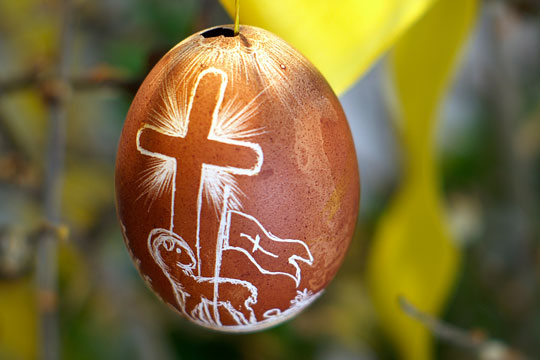
Easter is central to Christian faith. We are, as St. Augustine pointed out, an Easter people. How do we help students identify themselves as Easter people and claim Alleluia! as their song?
First, make sure they know the story of Easter. Easter is the “Feast of feasts,” the moment when the Kingdom of God enters into our time (Catechism of the Catholic Church, 1168‒1169). Jesus’ Death on the Cross and his Resurrection after three days shows us that death is not the end of our story. Use the Gospel accounts of the Resurrection, along with your textbook, storybooks (for younger students), or clips from age-appropriate movies (for older students), to share the details of this historical event, which was evidenced by the empty tomb and the Apostles’ encounter with the risen Christ. Use role-playing and other creative teaching activities to bring the story alive for your students.
Second, help students to know how Easter shapes the Church and Catholic life. Share with students the customs surrounding Easter. Explain that the 50 days between Easter and Pentecost is a special and joyful time. Churches are adorned with banners and flowers, the paschal candle burns brightly, we sing joyful music, and we hear readings at Mass from the Acts of the Apostles. Explain how every Sunday is a “little Easter.” At Mass, we experience the Risen Christ in the Liturgy of the Word and the Liturgy of the Eucharist. We watch as the Body is broken and the Blood is poured for us just as it was on the Cross. We then receive the living Christ in the Eucharist.
Third, connect Easter to your students’ home life. Suggest to parents to have a special family candle that they light at every meal during the Easter season. Show how common ways of celebrating Easter—wearing a special Easter outfit, coloring Easter eggs, and enjoying a special family meal—reflect the meaning of the Feast of feasts. New clothes help us remember our baptismal garments, colored eggs represent the end of Lent and beginning of new life, and a special Easter meal symbolizes both great celebration and the banquet in heaven.
Finally, help children know where they fit into the Easter story. Jesus showed us that by surrendering to God’s will, new life can come from suffering and death. Use stories from real life to explain that each of us encounters times when people, things, or circumstances we care about may die or are lost. Christian hope, born of Jesus’ Paschal Mystery, means that if we focus on Jesus Christ and offer our suffering to God, we will change, grow, and rise up to new ways of living as God intends.
How do you help students understand that they are Easter people? How will you help them claim Alleluia! as their song?





Be the first to comment